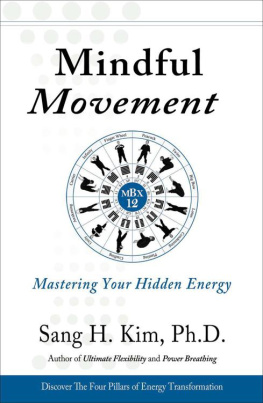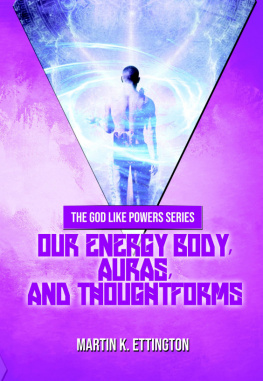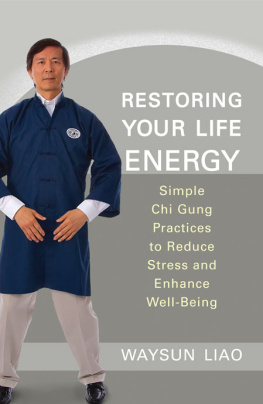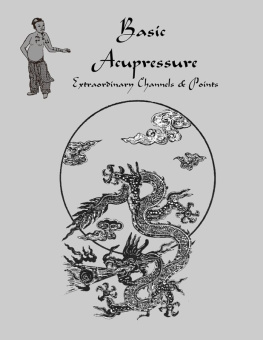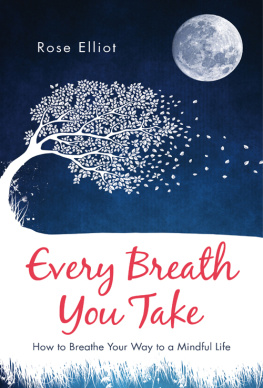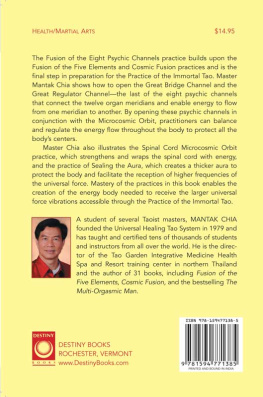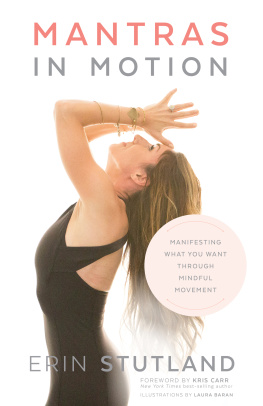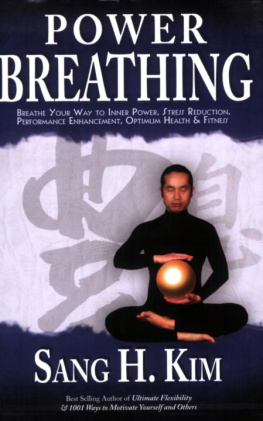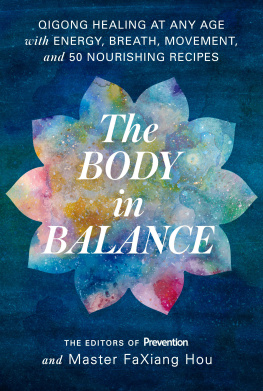Mindful Movement
Mastering Your Hidden Energy
by
Sang H. Kim, Ph.D.

Turtle Press Washington DC
MINDFUL MOVEMENT: MASTERING YOUR HIDDEN ENERGY. Copyright 2013 by Sang H. Kim. No part of this book may be reproduced or transmitted in any form or by any means, electronic or mechanical, including photocopying, recording or by any information storage and retrieval system, without permission from the authors, except for the inclusion of brief quotations in a review. For information, address Turtle Press, 500 N. Washington St #1545, Rockville MD 20849. www.TurtlePress.com
ISBN: 9781938585296
The Turtle Press name and logo are trademarks of Turtle Press.
Warning-Disclaimer: This book is designed to provide information on specific skills used in health and fitness. You are urged to read all available material, learn as much as you wish about the subjects covered in this book and tailor the information to your individual needs. Anyone practicing the skills presented in this book should be physically capable to do so and have the permission of a licensed physician before participating in this activity. Every effort has been made to make this book as complete and accurate as possible. However, there may be mistakes, both typographical and in content. The author, publisher, printer and distributors shall neither have liability nor responsibility to any person or entity with respect to loss or damages caused, or alleged to have been caused, directly or indirectly, by the information contained in this book.

...hidden yet always working, being present everywhere yet found nowhere...
Road Map
The goal of MBX, mindful movement and deep breathing exercises, is to invigorate your inner energy flow by activating the four pillars of energy transformation: mindfulness, movement, breath, and meridians.
The first and second pillars are explained in Chapters 1: Mindfulness and Chapter 2: Mindful Movement. The last two pillars and the twelve MBX postures presented in this book (MBX-12) are explained in detail in Chapter 3. Each posture section includes an introduction to the posture, step-by-step practice guidance, focal points, self-assessment criteria, meridian chart, expected effects, focal point illustration, and short essays to help you deepen your understanding of MBX principles and the underlying mechanisms. You can also view a video demonstration of all 12 postures at Youtube.
Chapter 4 includes 13 MBX Mudras, symbolic hand movements with practical functions. Each mudra activates meridians in the hand and affects energy flow in the corresponding organ(s). Mudras are a good way to practice mindfulness when you cannot do full body exercise such as MBX-12. Chapter 5 has wellness applications of MBX postures that can help you relieve anxiety or stress-related headaches and improve balance.
The text topics located between the exercises are not meant to be read sequentially. Instead, browse through them and read the ones appeal to you at the time. As you advance, you will find that different sections have more meaning for you. Reading the first two chapters before you begin to practice is highly recommended. They will help you understand the fundamental concepts of mindfulness and mindful movement.
Authors Note
For beginners, this book may be hard to grasp initially. The postures that make up the core of MBX (mindful movement and deep breathing exercises) integrate the four pillars of energy transformation: mindfulness, movement, breath, and meridians.
If you have experience with practicing one or more of the four pillars, that will form your foundation for understanding MBX. If not, start from the basics and learn one movement at a time. Once you understand one posture well, you can apply the same principles to practicing subsequent postures. The more you practice, the more you will come to integrate the four pillars without conscious effort and achieve a flow experience where all become one.
As you learn the postures and practice methods, it is important to follow directions, practice each posture mindfully, feel the flow, and integrate it into your bodys natural character.
For advanced practitioners, the goal is to attain oneness of the four pillars. MBX integrates your moving body with your breath, redirects energy flow along the 12 meridians, and unites the mind with all in the present.
Mindfulness
Mindfulness, the first pillar of energy transformation, is bringing deliberate attention to the present moment without judgment. The objective of being mindful is to connect the mind with the body. As human beings, we are not always conscious of our bodies. Most of time, we are just busy with the business of life.
Is being mindful hard to practice? Yes and no.
Yes, because we forget things. We live purposefully and without purpose. We are used to being judgmental in literally every area of our lives. And we must. Without judgment, we can be vulnerable.
No, because we can be mindful by simply paying attention to what we think and do. Being mindful does not mean we should be vigilant at all times. Indeed, quite the opposite is true. We can be simply aware of what we think and do.
The ultimate experience of being mindful occurs when we forget about everything, even the mindful self and doing. In that mode we are full of energy, utterly self-generated. Hence mindfulness is the first pillar of energy transformation. However, a paradox is that to be mindful, one must not try to be mindful, and to not be mindful, one must be mindful.
Can we cut it short? The answer is yes. We can skip the mindful part. How? By just doing what we like to do when we feel like doing it, in the way we feel the best. No thought, no mind. Its a vacation of the mind, so to speak. You kick the mindful thing out of the equation from the start.
Total physical immersion with mental emptiness. Just doing.
For most of us, this is quite a challenge. As in rock climbing, where we use a niche to securely place a foot or fingers, we need somewhere tangible to place our mind. Having something to think about or focus on keeps us oriented. It anchors the mind to a specific moment in time, preventing it from fleeting. It keeps our awareness contained within our body so that the body does not do things randomly.
Once the mind is contained, the body can fly. When the body is in motion, the action generates an even greater amount of energy. Thus movement is the second pillar of energy transformation (discussed in Chapter 2: Mindful Movement).
~
The niche the mind can grab is interest which holds your attention. In this book, we use the body as the target of interest to contain the mind. For example, your hand. When you stretch your fingers wide open, your mind comes to your hands. Instantly.
The body is amazing. We think the mind is the master of us. But I often think the opposite is true. The mind is quite impatient and radical in action, hard to herd. But when the body moves, the mind comes along. Physical actions generate mental engagement.
When our body moves in flow-like motion, as in dancing, the body merges with the rhythm. The mind tunes in, and the body contains the mind. They dance together, paying attention to each other.
~
The practice of being mindful begins with a small step. Bring your awareness back to you and your actions. Let it stay there. For example, when you eat, be aware of chewing slowly and tasting the food. When you walk, be aware of your posture. When you sit, keep your spine straight. Doing so gives you strength and room for breath. Press the diaphragm slightly downward toward the belly. This helps your body and mind come into focus and equanimity. By paying attention to small things in the way you act and think, you can lift yourself to the next level. Amuse yourself. Let yourself grow.

